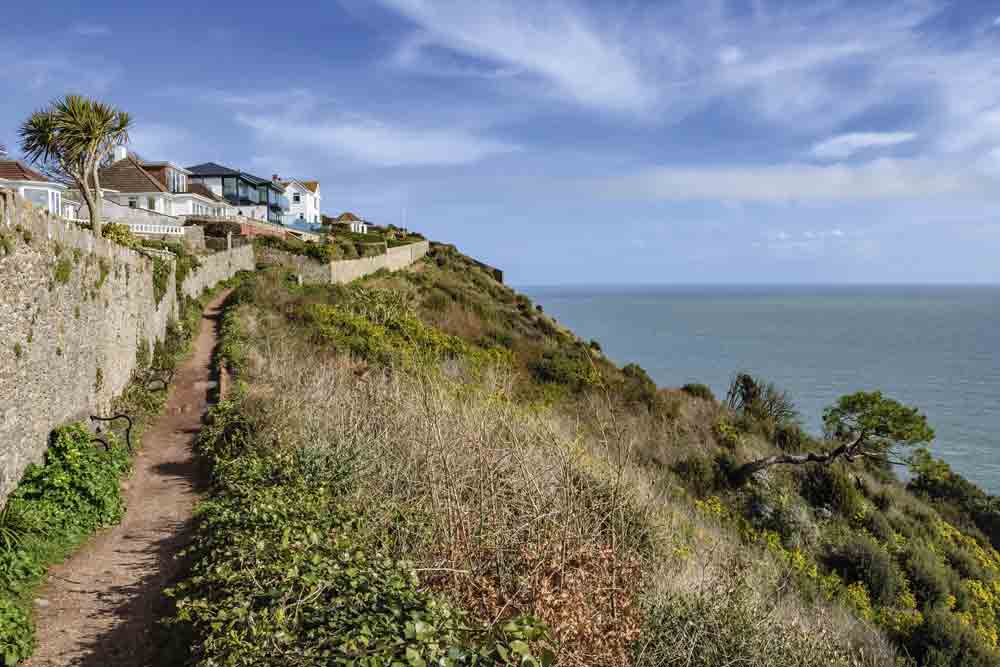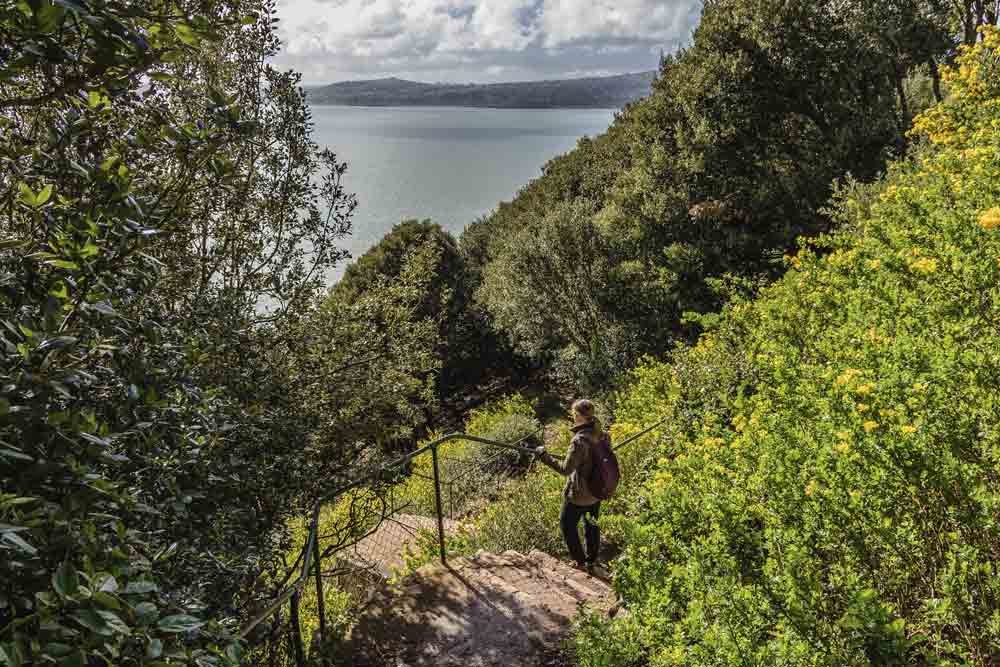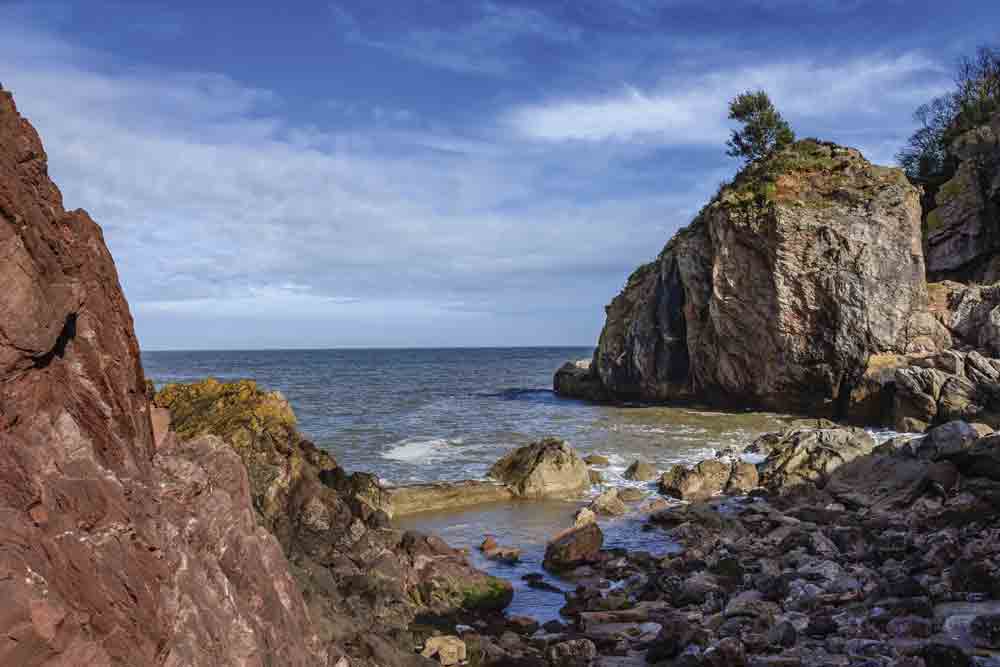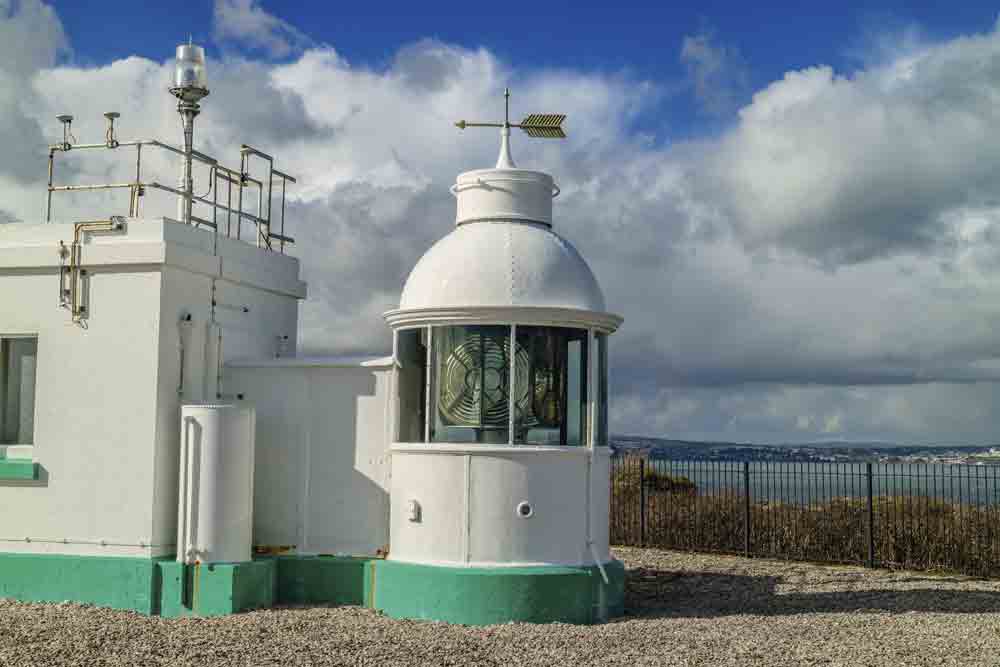Motorhome travel: Torbay in the spring
Words by Catherine Sheridan Photography by James Hodgson
It was the hope of warmer temperatures that lured us to Torbay for an early spring trip.
A curved, sheltered bay on the south coast of Devon, Torbay is renowned for its sunshine. Once there, we discovered it had a beautiful natural setting and fascinating history, too. Spring is an ideal time to go as campsites and attractions are opening, while the summer crowds haven’t arrived.
Torquay – our first stop
Torquay was our first stop, and we parked by the historic village of Cockington on the town’s outskirts. Dating back to a Saxon manor house, Cockington has managed to remain relatively isolated from the busy town.
A footpath by the side of a stream led us to the seafront, where more of the old heart of Torquay remains at Torre Abbey. Meaning hill or craggy peak, Torre had been a small Saxon settlement when the abbey was founded in 1196, along with its own fishing quay. The abbey still stands as a country house turned art gallery and the next door tithe barn is complete, going down in history for its role during the 1588 Spanish Armada when the entire crew of a captured ship were imprisoned there.
Torquay as a resort was born when, in the 1790s, two local landowners saw an opportunity in the emerging fashion of bathing for health. They built a row of holiday cottages beside Torre Sands and enthusiastically carried out continental grand tours to collect ideas such as Italianate villas with decorative towers, surrounding them with exotic pines and bay trees. They aimed the new resort at wealthy visitors and soon drew in major royalty from across Europe and many literary celebrities. By 1886, Torquay was the wealthiest town in England in proportion to its population, and maintained its celebrity and glamour up until WWII.
The promenade follows the curve of the bay, busy with people jogging and admiring the view. Bright sunshine sparkled off the sea. The steep and rocky hills topped with pines and an impressive mix of palm trees made a wonderful change after winter.
We were following the South West Coast Path, which, after the promenade, rises up behind the harbour. These narrow back streets once housed the Victorian resort’s labourers.

Around the next headland, villas and hotels stood among trees on sun-facing cliffs looking out over the sea. Terraced gardens were green and hazy with Mediterranean oaks, and yellow flowers scented the warm earthy air – making it easy to forget it was still so early in the year.
We enjoyed a coffee on sunny Meadfoot Beach, listening to the waves rising onto the sand, before heading back through a sleepy neighbourhood to the seafront. We collected our motorhome and continued to Widdicombe Farm campsite.
The following day we returned to Torquay, this time taking the No 22 bus along the seafront and up to the genteel neighbourhood of Wellswood. This is one of several hilltops that make up Torquay, which is listed as a Unesco Global Geopark due to its dramatic geology, with blue-grey limestone that formed in tropical seas standing beside bold red sandstone from desert conditions, riven with telltale signs of huge land upheaval and sea level change.
The prehistoric caves of Kents Cavern
One result of this is the hilltop cave known as Kents Cavern, a long-standing attraction visited by Beatrix Potter and Agatha Christie as children and a prehistoric site of worldwide importance. Now surrounded by houses and gardens, underground a series of caverns contains evidence of Britain’s oldest human settlement, at over 40,000 years old. It’s the only cave known to have been lived in by three different species of early humans.
Understandably, when the last Ice Age left the whole of southern England in permafrost, the steady 14°C of the caves encouraged both people and animals to shelter there, even though they had to share it. To keep their wild neighbours at bay, early people used fire.
In another cavern, there’s a young mammoth’s huge milk tooth, a fang from a scimitar-toothed cat and a human bone complete with hyena gnawing marks.
From the cave we took the coast path along the top of Anstey’s Cove and through woodland down to an extraordinarily steep road by the Cary Arms, a pub overlooking a small harbour where smoke drifted from chimneys into the surrounding woods.
Sharing the same headland as Torquay, the steepness of the terrain made the busy town centre seem a world away.

Following the foot of wooded cliffs, the path led us round to Oddicombe Bay, where we appreciated the cliff railway, a funicular built in 1926 specifically to take people to the beach. It took us effortlessly back up the hill as we enjoyed the view over the sea.
By day three of our trip we’d realised that if we hoped to go out on bikes we’d need to find somewhere not only quieter but also less hilly than Torbay itself.
Following the Dart Valley Trail
Just inland, the old market town of Totnes had an attractive high street and Norman castle but, most importantly, the Dart Valley Trail. Only around seven miles long, to the north the mostly level route runs to the village of Dartington.
Climbing up above the town along the green sides of the River Dart, woodland regularly opened out to give us views of the reed-lined river and the hillsides opposite. We could fairly easily cycle most of the uphill sections, although one stretch did require pushing the bikes.
An extra unexpected challenge lay in the form of snow, persisting where the path had been shadowed by hedges. The village of Ashprington had a friendly pub and we sat outside until it was time for the tour we had booked at nearby Sharpham vineyard. Sharpham has been growing vines since the early 1980s, on steep south-facing slopes that drain well and are surrounded by a coiling meander of the River Dart. We left the bikes in the farmyard and were given a map to guide ourselves around the estate.
Early spring is pruning season and the vines were still bare after winter but it was a pleasant walk all the same, especially with the anticipation of trying the wines Sharpham produces.
In the vineyard shop, where a viewing window overlooked some vats and wine-making machinery, we were given four very different wines to try. These ranged from light and sparkling to an oaky deep red. We were talked through them, with knowledge and patience, by Tom. Accompanying local cheese and biscuits gave us energy to pedal back up to the cycle path before the longer downhill run back to Totnes.

The bustling harbour of Brixham
We spent the last couple of nights of the trip at Hillhead, a well-equipped campsite with a regular bus that ran down to nearby Brixham, a busy fishing town sitting on the opposite arm of the bay to Torquay. We got our bearings at the inner harbour, which is flanked by hillsides of colourful houses, then followed the quayside, where people hosed down yachts and mended fishing equipment. A few remaining sailing trawlers were preserved in the harbour among present-day fishing boats.
Part of Brixham’s revival was down to Belgian fishermen, who arrived in the 1940s as refugees aboard their larger and more modern boats and so introduced new technology to the struggling port. This update, along with high export demand and the conservation of fish stocks, means Brixham now lands the highest-value catch of any port in England or Wales. In 2011, a new fish market opened and this can be visited by anyone up for a 5am start!
Beyond the harbour we continued along the water’s edge and turned onto Berry Head. A nature reserve, this grassy headland is supported by sheer cliffs nearly 200ft high.

Another striking feature is its Napoleonic fort, part of a network of defences along the south and east coast built at the turn of the eighteenth century when the threat from Napoleon was significant. However, after his defeat at Waterloo, Napolean was captured soon afterwards and was taken by ship to the nearest British port – Torbay.
For a fortnight, Napoleon was kept on board the HMS Bellerophon while the allied forces that had defeated him decided what to do. Meanwhile, Napoleon became a willing tourist attraction, filling the inns of the burgeoning resort of Torquay while fishing boats from Brixham took people out on trips to view him. Napoleon complied and came out on deck to pose and wave.
Napoleon was then moved to a more secure base in Plymouth, by which time excited crowds of 10,000 people were recorded as turning out to see him. Shortly after that, Napoleon was exiled to remote St Helena in the south Atlantic.
From a bird hide nestled into a sloping hillside below the fort we viewed hundreds of guillemots and fulmars nesting on the steep cliffs, loudly calling over the water. Further along we watched gannets dive for fish. Suddenly there was the dark fin and white-striped flash of a common dolphin – a fantastic end to the day.
Waiting for the bus as the sun set over the harbour, we reflected on how Torbay had gone beyond our expectations. Often dismissed as a faded resort, its natural situation remains impressive.
It has a fascinating history with involvement in major European events and (even with some snow on the ground) the sun still shone.
Buy MMM magazine every month for more motorhome travel features, in the UK and Europe. You can buy digital issues here or order a print subscription here.








Recent Updates
Engine management lights: all you need to know
What is the engine management light? What does it mean, and what do I have to do? ...
Motorhome air suspension: all you need to know
Motorhomes are heavy and the additional weight of equipment and height of the bodywork can increase the loads ...
Motorhome WiFi: how to get better motorhome internet
Staying connected on the move is more and more essential, so relying on campsite WiFi isn't an option – here ...
A class of their own - our guide to A-class motorhomes
Thinking of trading up to an A-class, or even going straight to the top of the motorhome tree? We guide you ...
Explore overseas on a motorhome dream tour
Enjoy exotic travel in a campervan or motorhome by hiring, swapping with someone else or exporting your ...
Motorhome water systems: everything you need to know
On-board water is an important part of every motorhome – here’s everything you need to know ...
Campervanning in Europe: what you need to know
Whether you're planning a leisurely drive through the French countryside, navigating bustling city streets in ...
Campervan security: all you need to know
With thefts on the increase, it’s important to know how to keep your campervan secure and prevent campervan ...
Campervan furniture: everything you need to know
Our campervan experts guide you through all the essentials for your campervan, including tables, chairs, ...
Campervan finance: how to fund your purchase
Here we look at the different types of campervan finance available, to help you decide what’s the best option ...
Other Articles
Britain’s best used motorhomes
Want a great motorhome without paying the premium for a new one? Here's a guide to the best you can get in the pre-owned market for each layout, ...
Which motorhome? Choosing the perfect motorhome for you
Choosing a motorhome or campervan is one of the biggest buying decisions you’ll ever make, so it's important ...
Campervan washroom essentials: stay fresh on the road
Our guide will take you through the campervan washroom essentials you'll need so you're well-prepared for ...
Dogs in campervans: all you need to know
Follow our advice and your dog will enjoy campervanning as much as you do ...
Electric campervans: all you need to know
Our guide will take you through everything you need to know about electric campervans and what the future ...
Motorhome electrics: a complete guide to your motorhome electrical set-up
Motorhome electrics can dramatically enhance the convenience and comfort of your vehicle – but they can be ...
Lighting for campervans: all you need to know
We guide you through all the lighting options available for you and your campervan, including interior ...
Electric bikes for motorhomes: our ultimate guide
Read our comprehensive guide to electric bikes for motorhome owners, helping you add electric power to your ...
Our guide to 'cheap' motorhomes in 2024
If you're on the hunt for an affordable new motorhome, this is the best place to start – we've rounded up a ...
Campervans in winter: all you need to know
Here's your guide to preparing your campervan for the colder months, whether you will be using it or putting ...